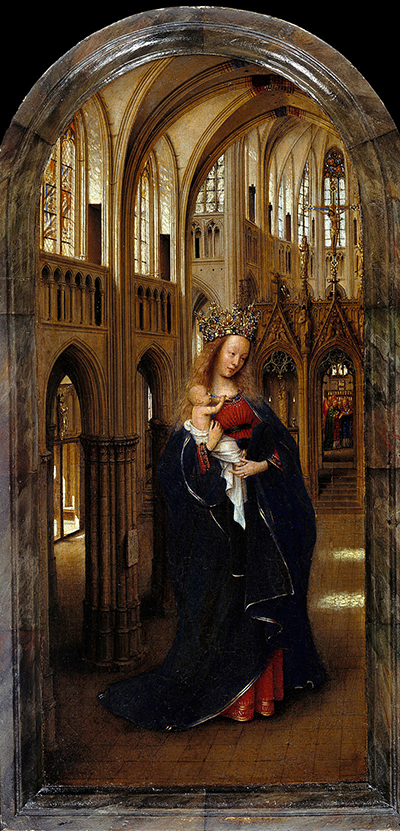Madonna in the Church is also known as The Virgin in the Church by some and is a small oil painting completed by Jan van Eyck around 1438-1440. It was produced on a small wooden panel, as in line with most of his work.
Within this memorable painting you will find the Virgin Mary holding baby Jesus within a Cathedral setting. The baby in arms looks particularly small in this depiction, or his mother is enlarged - one or the other. It is perhaps the detail that Van Eyck adds to the interior of this cathedral which is the most significant highlight of this particular work. There is also a beautiful handling of light in how it enters the building through some ornate stained glass windows in the top left of this painting.
In this depiction, the artist chooses to present the Virgin in the figure of the Queen of Heaven, as identified by her elaborate crown and the way in which the mother and child interact in this scene. Elements of this piece actually point to influences from the Byzantine period of art, although their inclusion may not have been a conscious decision from the artist.
Any artist that can depict the interior of a cathedral quite so beautifully and also accurately must clearly have an understanding of architectural design as well as his obvious skills in painting. The construction of the scene and use of perspective takes Van Eyck beyond just a master of portrait painting, into another realm altogether. This can be regarded as one of his most important paintings, for this reason, although it is still overshadowed by the true highlights of his career - namely the extraordinary Ghent Altarpiece, Arnolfini Wedding and also the Man in a Turban.




